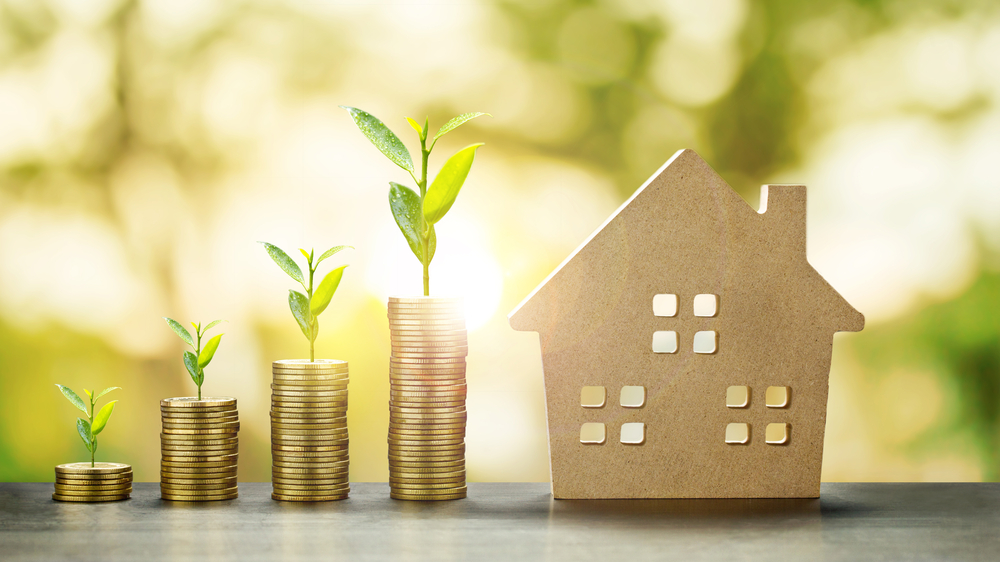Here’s How Living Green Saves Green
Some homeowners might feel that living sustainably or ‘going green’ is just another trend. However, eco-friendly is not simply a buzzword; it’s a way of life. Embracing a green life helps decrease an individual’s impact—or carbon footprint—on the planet and it comes with other rewards, too.
Living green saves green. When homeowners make the decision to live sustainably, they can save money in the process. Living a life that is better for the planet can actually be beneficial for the financial bottom line, too. Here’s how living green saves green and why every homeowner should be eco-friendly.

Fast Facts about Energy Efficiency
One of the easiest ways to live more sustainably is by embracing an energy-efficient home. Making changes in the home to decrease energy use isn’t difficult or even expensive. In fact, some changes are even free. Here are five fast facts about energy use and savings that could surprise homeowners:
- 30 percent of air escapes the refrigerator when we leave it open
- Google uses“… 0.0003 of energy to answer an average search query”
- Microwaves use half as much energy as the standard oven
- Heating and cooling accounts for more than 40 percent of the energy use of the home
- An eight-minute shower uses about 17 gallons of water
- Older toilets flush about five to seven gallons of water with each use; newer low-flow models flush less than two gallons.
- A 9-watt energy-efficient LED costs about $1.26 per year, while a 43-watt halogen bulb costs more than $6 per year.

Simple Ways to Save Energy and Save Money
Embracing a greener lifestyle is more cost-effective and planet-friendly than being an energy vampire. Homeowners can make small changes to their habits to decrease their energy dependency.
Want to go greener? Make these changes:
- Adjust the thermostat. Heating and cooling the home is the biggest energy drain. If homeowners aren’t in need of a new HVAC system, they can use less energy by simply adjusting the thermostat. Turn the thermostat up to 78 degrees Fahrenheit in the summer and 68 degrees Fahrenheit in the winter. While these temps might be the norm for the household, they can help save money and decrease the home’s energy use.
- Install low flow toilets and faucets. Low-flow toilets flush less water per use. Every time we flush, water is wasted. Low-flow toilets flush a fraction of the amount of water with every use. Not only will the home save money, but it also will flush less water down the drain. Remember that water is a precious commodity; not every country can simply afford to flush it.
- Switch all light bulbs to LED bulbs. The most energy-efficient light bulb is the LED. These bulbs emit less heat and use less energy overall. Plus, they also cost less to use each year, and they last for longer than other bulbs. While LED bulbs might be more expensive, they are worth the cost in savings and usability.
- Time the shower and install low-flow shower heads. Install a low-flow showerhead to ensure that less water is wasted per use. These fixtures aren’t an expensive investment, and they can help homeowners save money over time. Homeowners also could opt to take shorter showers to decrease water use and energy costs. Every shower doesn’t just use water, it also uses heat from the water heater to warm that water. Showers are a double-whammy cost of water and heat source.

Green Habits to Help the Earth
Homeowners also can embrace other environmentally-friendly habits that help the planet and reduce the home’s carbon footprint. While these habits or routines won’t necessarily lower energy costs, they do provide an environmental benefit.
- Start a recycling program at home. Homeowners can sort paper, plastic, glass and other recyclable materials into bins. Then take the materials to a recycling center to give them a new life. Children can help sort items and decorate bins for the family’s recycling endeavors.
- Ditch plastic. Instead of plastic sandwich bags, opt for reusable silicone sandwich bags. Use reusable water bottles instead of buying throwaway plastic bottles.
- Create a compost pile. Some scraps like potato peels, coffee grounds and other biodegradable materials from the trash can be used to create a compost pile that can create rich fertile soil. NPR offers an easy tutorial on how to start composting and help climate change.
- Plant a garden, a tree or even flowers. Every green life helps infuse the environment with oxygen and removes carbon dioxide. Plant a tree, a vegetable garden or just some flowers. Every green life can help the planet. Look for trees and plants that grow best in the climate. Even those without a green thumb can find easy to maintain plants.
Making changes at home to decrease energy use and go green can help homeowners save green. Adopt new ‘greener’ habits to help reduce the home’s carbon footprint and live an eco-friendly life and help save the planet in the process.


